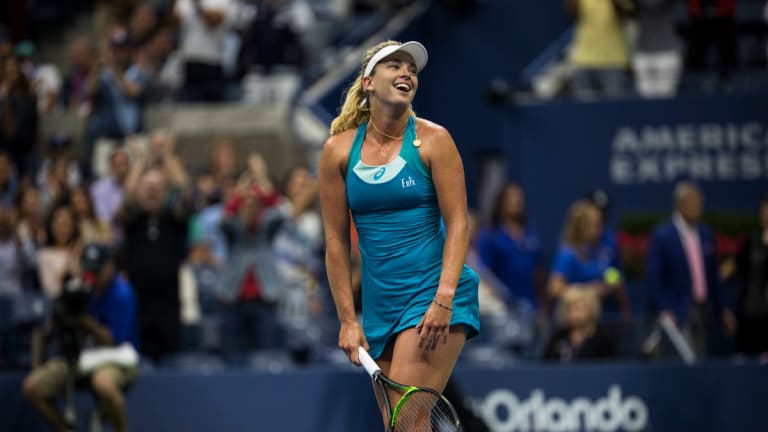NEW YORK—Coco Vandeweghe was serving for the match and a place in her first US Open semifinal, but she was also teetering on the brink. While she led top seed Karolina Pliskova by a set and 5-3, Vandeweghe’s backhand was doing its best to sabotage her chances. Over the previous 10 minutes, she had slapped nearly as many backhands into the net as she had hit over it. Now she was down 15-30 and on the verge of letting Pliskova back into the match.
The Coco of old might have panicked and lost her cool in this situation. She might have slammed her racquet or screamed in rage. And, truth be told, she had done both of those things earlier. But now wasn’t the time to let her anger out. Now was the time to bury it and get on with the job at hand.
What do you do when you can’t hit a backhand? You make the most of every forehand you get. Vandeweghe rifled two crucial forehands for winners to dig herself out of trouble and complete the 7-6 (4), 6-3 upset. When she raised her arms and looked to her player box, her coach, Pat Cash, couldn’t hide his amazement. He shook his head a little, as if he couldn’t quite believe how well his player had just handled the most pressure-packed moment of her career.
Afterward, Vandeweghe sounded the way Cash looked: pleasantly perplexed by how well their partnership is going.
“I think the biggest thing [he has done] is channelling my intensity and tenacity out on the court, and putting it into a singular focus,” she said.
But exactly how had he done this? How had he improved her mentality at the relatively late age of 25? Trying to explain that, Coco was at a loss.
“You’ll have to ask him how he’s been able to do that,” she said. “I don’t really know. Maybe it’s, like, some Jedi mind trick. I don’t know how he’s doing it.”

